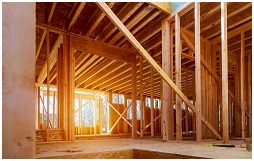Expert Advice on First-Time Homebuyer Tips

Whether you’re currently in the process of looking for your first home, or have just started to think about it, I have some first-time homebuyer tips to help make your journey as easy as possible!
Some of these you may already know about, and some you might not, but they are sure to make your first homebuying experience that much easier!
Get Pre-Approved
Having your mortgage pre-approved is an important step in the process and benefits you in three ways:
- Pre-approval helps verify your budget and allows your real estate agent to find the best home in your price range. Quick Tip: Don’t forget about the closing costs! These range from 1 to 4% of the purchase price and should be factored into your budget.
- Pre-approval guarantees the rate offered and locks it in for up to 120 days. This protects you from any increases in interest rates while you are shopping (phew!). Make sure to ask exactly how long your pre-approval is good for!
- Pre-approval lets the seller know that securing financing should not be an issue, which is beneficial in competitive markets!
Keep in mind, this is not the same as final mortgage financing approval, but it can be a very helpful step in the process towards getting your final approval by helping you work within your budget.
Using the My Mortgage Toolbox app can help you get pre-qualified as part of your pre-approval – right from your mobile phone! In addition, this incredible tool can help you calculate your closing costs and even your potential monthly mortgage payments.
Maintain Your Credit
If you are currently looking at homes or thinking about looking at homes, it is vital to maintain your credit throughout the entire mortgage process. Be sure to continue to pay your bills on time, refrain from applying for new credit, closing off credit accounts or committing to any other large purchases (i.e. new car), and also avoid pulling additional credit reports once you have been pre-approved. Another helpful tip is to keep any credit card balances below 70% of the limit to help skyrocket your score!
Utilize Your RRSPs
Did you know? The Home Buyer’s Plan allows you to utilize up to $35,000 from your RRSP and put it towards a down payment on a new home, which you can repay over a 15-year period. You must be a first-time home buyer to qualify.
Take Advantage of Government Programs
There are various government programs in place that provide some financial relief in the form of rebates and tax refunds, including:
- First-Time Home Buyer (FTHB) Tax Credit: First-time home owners would get a credit of $1,500 if you qualify. Learn more.
- First Time Home Buyer Incentive: The government will cover 5% of the purchase price on a resale home or up to 10% on a newly constructed home, if you qualify. Learn more.
- GST/HST New Housing Rebate: You may qualify for a rebate for some of the GST or HST paid on the purchase price or cost of building your new house. Learn more.
Even More First-Time Homebuyer Tips? There are also additional programs and support available depending on your province that are worth looking into, including land transfer and property transfer rebates, first-time homebuyer tax credits, homeownership support programs and more.
Contact Me for Expert Advice!
Before you get started on your homebuying journey, make sure to reach out to me for expert advice on choosing the right mortgage options, determining your budget, getting your pre-approval, and more!
More related readings you might like:
- How to Calculate Mortgage Trigger Points?
- Adapting Your Finances to Inflation
- Time to Check-In with your Mortgage!
- Understanding Insurance
- Dreaming of Your Very Own Vacation Home
- New to Canada? All about How to Get a Mortgage
- Don’t Be House Poor – Manage Your House Expenses
- Winterizing Your Home
- Make sure your holidays are stress and credit-free
 As we move into the Fall market, there are some important things you should be aware of. This article will help you understand how to calculate your mortgage trigger points.
As we move into the Fall market, there are some important things you should be aware of. This article will help you understand how to calculate your mortgage trigger points.

 Building a new home is an exciting adventure but requires very different considerations. To help you have the best experience, here are 5 of the most important things to consider:
Building a new home is an exciting adventure but requires very different considerations. To help you have the best experience, here are 5 of the most important things to consider: There’s something magical about summer and no matter where you live in Canada, summer is the perfect opportunity to spend a little time with family and friends. Nothing says party vibes more than food on the grill and summer drinks flowing.
There’s something magical about summer and no matter where you live in Canada, summer is the perfect opportunity to spend a little time with family and friends. Nothing says party vibes more than food on the grill and summer drinks flowing.